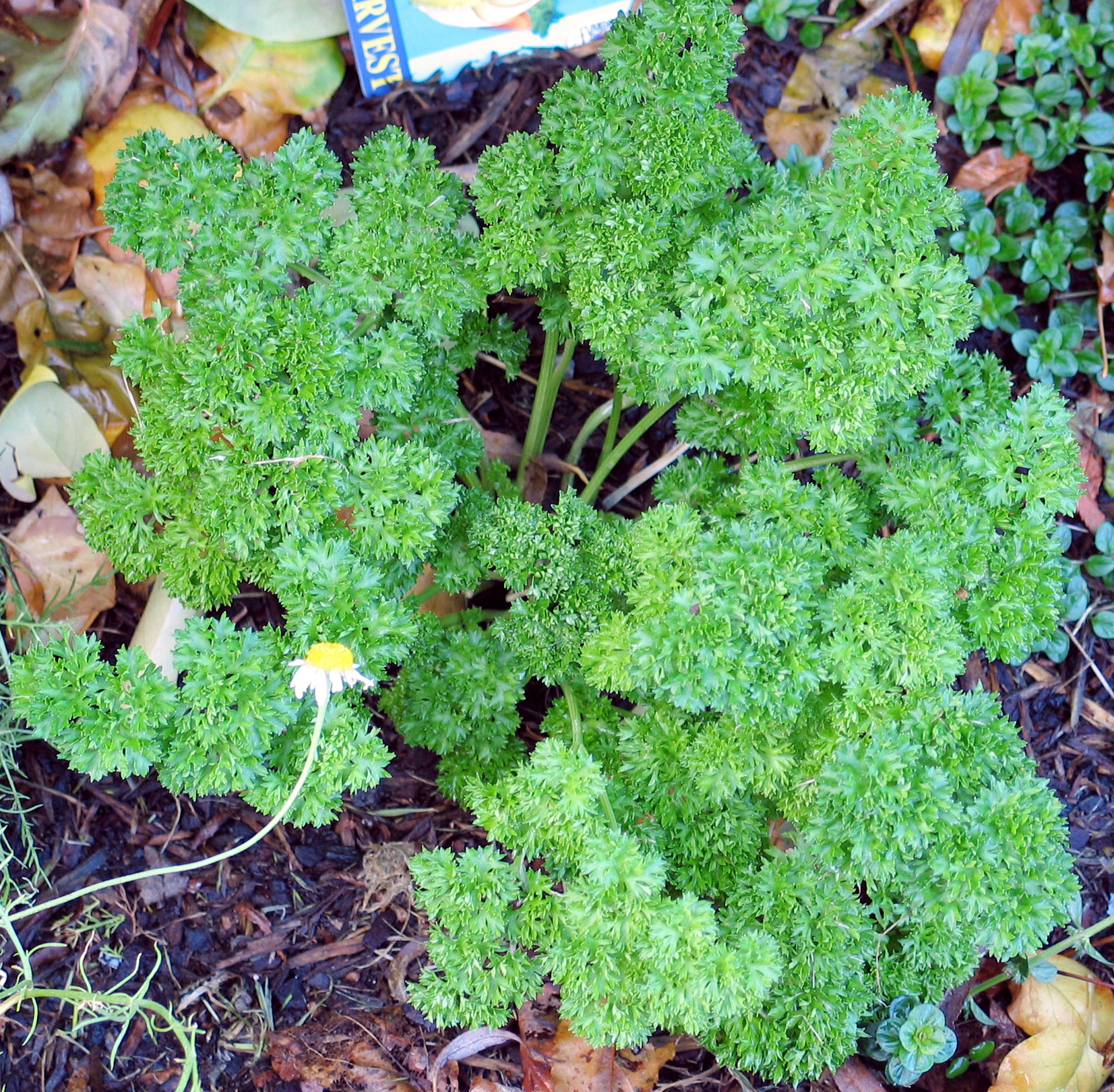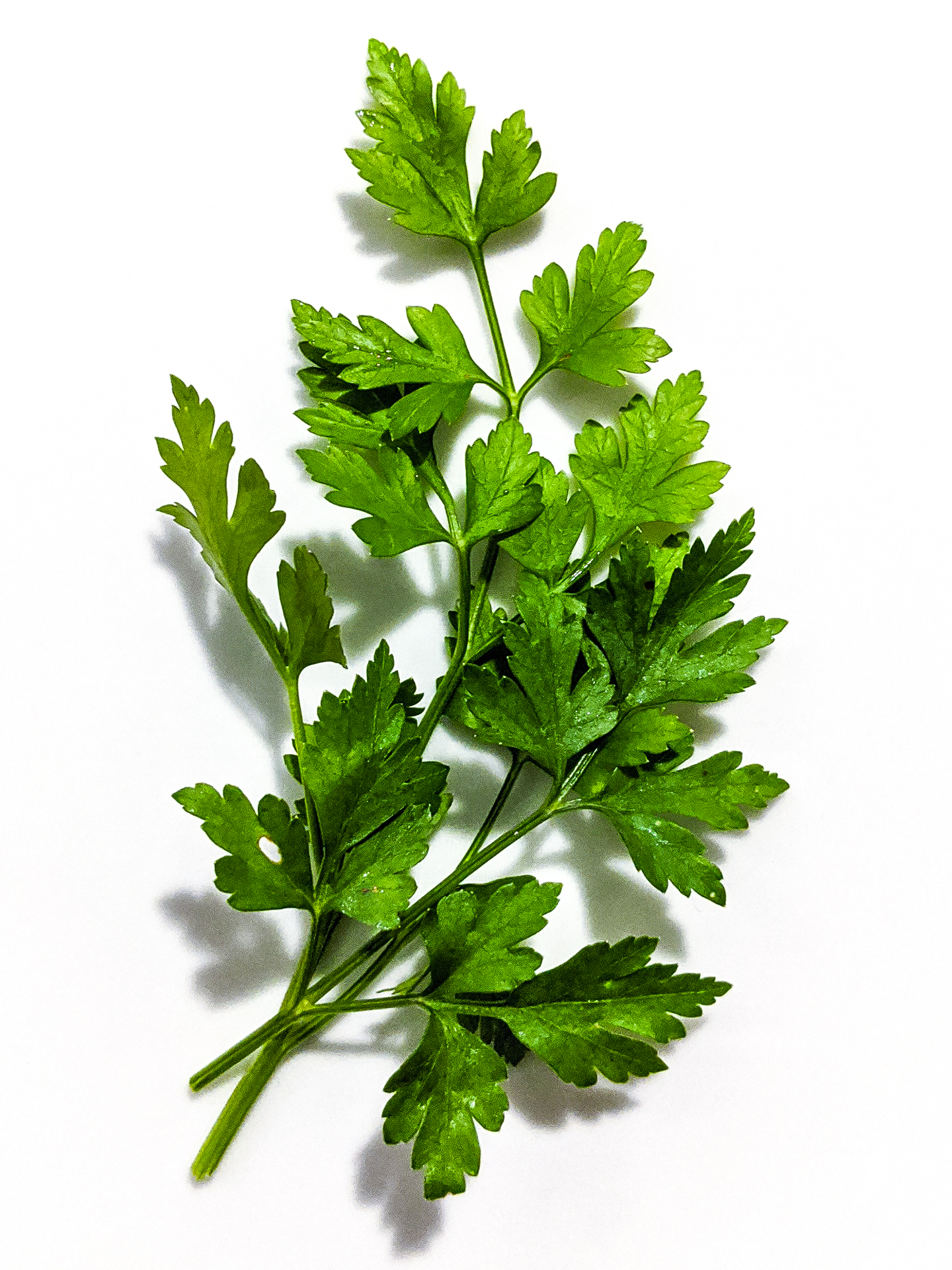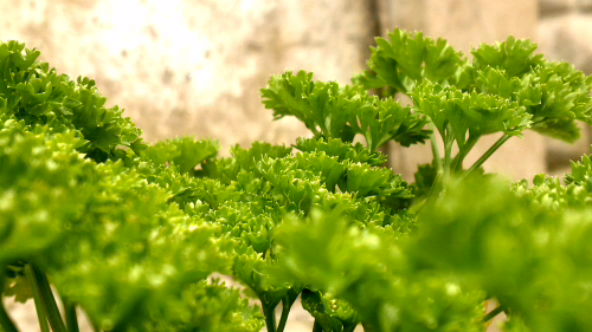|
Biennial Plants
A biennial plant is a flowering plant that, generally in a temperate climate, takes two years to complete its biological life cycle. Background In its first year, the biennial plant undergoes primary growth, during which its vegetative structures (leaves, stems, and roots) develop. Usually, the stem of the plant remains short and the leaves are low to the ground, forming a rosette. After one year's growing season, the plant enters a period of dormancy for the colder months. Many biennials require a cold treatment, or vernalization before they will flower. During the next spring or summer, the stem of the biennial plant elongates greatly, or "bolts". The plant then flowers, producing fruits and seeds before it finally dies. There are far fewer biennials than either perennial plants or annual plants. Biennials do not always follow a strict two-year life cycle: most plants in the wild can take three or more years to mature. Rosette leaf size has been found to predict when a plant ... [...More Info...] [...Related Items...] OR: [Wikipedia] [Google] [Baidu] |
Parsley Curled
Parsley, or garden parsley (''Petroselinum crispum''), is a species of flowering plant in the family Apiaceae that is native to Greece, Morocco and the former Yugoslavia. It has been introduced and naturalisation (biology), naturalized in Europe and elsewhere in the world with suitable climates, and is widely cultivated as an herb and a vegetable. It is believed to have been originally grown in Sardinia, and was cultivated in around the 3rd century BC. Linnaeus stated its wild habitat to be Sardinia, whence it was brought to England and apparently first cultivated in Britain in 1548, though literary evidence suggests parsley was used in England in the Middle Ages as early as the Anglo-Saxon period. Parsley is widely used in European cuisine, European, Middle Eastern cuisine, Middle Eastern, and American cuisine. Curly-leaf parsley is often used as a garnish (food), garnish. In Central European cuisine, central Europe, Eastern European cuisine, eastern Europe, and southern Eur ... [...More Info...] [...Related Items...] OR: [Wikipedia] [Google] [Baidu] |
Onion
An onion (''Allium cepa'' , from Latin ), also known as the bulb onion or common onion, is a vegetable that is the most widely cultivated species of the genus '' Allium''. The shallot is a botanical variety of the onion which was classified as a separate species until 2011. The onion's close relatives include garlic, scallion, leek, and chives. The genus contains several other species variously called onions and cultivated for food, such as the Japanese bunching onion '' Allium fistulosum'', the tree onion ''Allium'' × ''proliferum'', and the Canada onion '' Allium canadense''. The name '' wild onion'' is applied to a number of ''Allium'' species, but ''A. cepa'' is exclusively known from cultivation. Its ancestral wild original form is not known, although escapes from cultivation have become established in some regions. The onion is most frequently a biennial or a perennial plant, but is usually treated as an annual and harvested in its first growing season. ... [...More Info...] [...Related Items...] OR: [Wikipedia] [Google] [Baidu] |
Foxglove
''Digitalis'' ( or ) is a genus of about 20 species of herbaceous perennial plants, shrubs, and biennials, commonly called foxgloves. ''Digitalis'' is native to Europe, Western Asia, and northwestern Africa. The flowers are tubular in shape, produced on a tall spike, and vary in colour with species, from purple to pink, white, and yellow. The name derives from the Latin word for "finger". The genus was traditionally placed in the figwort family, Scrophulariaceae, but phylogenetic research led taxonomists to move it to the Veronicaceae in 2001. More recent phylogenetic work has placed it in the much enlarged family Plantaginaceae. The best-known species is the common foxglove, '' Digitalis purpurea''. This biennial is often grown as an ornamental plant due to its vivid flowers, which range in colour from various purple tints through pink and purely white. The flowers can also possess various marks and spottings. Other garden-worthy species include ''D. ferruginea'', ''D. ... [...More Info...] [...Related Items...] OR: [Wikipedia] [Google] [Baidu] |
Hollyhock
''Alcea'' is a genus of over 80 species of flowering plants in the mallow family Malvaceae, commonly known as the hollyhocks. They are native to Asia and Europe. The single species of hollyhock from the Americas, the Iliamna rivularis, streambank wild hollyhock, belongs to a different genus. Description Hollyhocks are annual, Biennial plant, biennial, or perennial plants usually taking an erect, unbranched form. The herbage usually has a coating of star-shaped hairs. The leaf blades are often lobed or toothed, and are borne on long petiole (botany), petioles. The flowers may be solitary or arranged in Fascicle (botany), fascicles or racemes. The notched petals are usually over three centimeters wide and may be pink, white, purple, or yellow. The fruit is a schizocarp, a dry disc divided into over 15 sections that contain seeds. Species The following species are accepted: *''Alcea abchazica'' Iljin *''Alcea acaulis'' (Cav.) Alef. *''Alcea afghanica'' I.Riedl *''Alcea antoninae'' ... [...More Info...] [...Related Items...] OR: [Wikipedia] [Google] [Baidu] |
Carrot
The carrot ('' Daucus carota'' subsp. ''sativus'') is a root vegetable, typically orange in colour, though heirloom variants including purple, black, red, white, and yellow cultivars exist, all of which are domesticated forms of the wild carrot, ''Daucus carota'', native to Europe and Southwestern Asia. The plant probably originated in Iran and was originally cultivated for its leaves and seeds. The carrot is a biennial plant in the umbellifer family, Apiaceae. World production of carrots (combined with turnips) for 2022 was 42 million tonnes, led by China producing 44% of the total. The characteristic orange colour is from beta-carotene, making carrots a rich source of vitamin A. A myth that carrots help people to see in the dark was spread as propaganda in the Second World War, to account for the ability of British pilots to fight in the dark; the real explanation was the introduction of radar. Etymology The word is first recorded in English around 1530 and w ... [...More Info...] [...Related Items...] OR: [Wikipedia] [Google] [Baidu] |
Aletris
''Aletris'', the colicroot, colicweed, crow corn, or unicorn root, is a genus of flowering plants in the family Nartheciaceae, native to North America and to eastern and southeastern Asia, especially China China, officially the People's Republic of China (PRC), is a country in East Asia. With population of China, a population exceeding 1.4 billion, it is the list of countries by population (United Nations), second-most populous country after .... It was used as a component in Lydia Pinkham's original Vegetable Compound. Species ''Aletris'' species include: * '' Aletris alpestris'' Diels. - Guizhou, Shaanxi, Sichuan, Yunnan * '' Aletris aurea'' Walter - from Texas and Oklahoma to Maryland * '' Aletris bracteata'' Northr. - Florida, Bahamas * '' Aletris capitata'' F.T.Wang & Tang - Sichuan * '' Aletris cinerascens'' F.T.Wang & Tang - Yunnan, Guangxi * '' Aletris farinosa'' L. - Ontario and much of eastern United States * '' Aletris foliata'' (Maxim.) Makino & Nemoto - K ... [...More Info...] [...Related Items...] OR: [Wikipedia] [Google] [Baidu] |
Dianthus Barbatus
''Dianthus'' ( ) is a genus of about 340 species of flowering plants in the family Caryophyllaceae, native mainly to Europe and Asia, with a few species in north Africa and in southern Africa, and one species (''D. repens'') in arctic North America. Common names include carnation (''D. caryophyllus''), pink (''D. plumarius'' and related species) and sweet william (''D. barbatus''). Description The species are mostly herbaceous perennials, a few are annual or biennial, and some are low subshrubs with woody basal stems. The leaves are opposite, simple, mostly linear and often strongly glaucous grey green to blue green. The flowers have five petals, typically with a frilled or pinked margin, and are (in almost all species) pale to dark pink. One species, ''D.'' ''knappii'', has yellow flowers with a purple centre. Some species, particularly the perennial pinks, are noted for their strong spicy fragrance. Taxonomy Species Selected species include: Hybrids ... [...More Info...] [...Related Items...] OR: [Wikipedia] [Google] [Baidu] |
Rudbeckia Hirta
''Rudbeckia hirta'', commonly called black-eyed Susan, is a North American flowering plant in the family Asteraceae. It grows to tall with daisy-like yellow flower heads. There are numerous cultivars. It is toxic when ingested by cats, but was used Traditional medicine, medicinally by Native Americans. It is the state flower of Maryland. Description ''Rudbeckia hirta'' is an upright annual plant, annual (sometimes biennial plant, biennial or perennial plant, perennial) growing tall by wide. It has alternate, mostly basal leaves 10–18 cm long, covered by coarse hair, with stout branching stems and Bellis perennis, daisy-like, composite flower heads appearing in late summer and early autumn. In the species, the flowers are up to in diameter, with yellow ray florets circling conspicuous brown or black, dome-shaped cone of many small disc florets. However, extensive breeding has produced a range of sizes and colours, including oranges, reds and browns. Taxonomy Varieties ... [...More Info...] [...Related Items...] OR: [Wikipedia] [Google] [Baidu] |
Silverbeet
Chard (; ''Beta vulgaris'' subsp. ''vulgaris'', Cicla Group and Flavescens Group) is a green leafy vegetable. In the cultivars of the Flavescens Group, or Swiss chard, the leaf stalks are large and often prepared separately from the leaf blade; the Cicla Group is the leafier spinach beet. The leaf blade can be green or reddish; the leaf stalks are usually white, yellow or red. Chard, like other green leafy vegetables, has highly nutritious leaves. Chard has been used in cooking for centuries, but because it is the same species as beetroot, the common names that cooks and cultures have used for chard may be confusing; it has many other common names such as silver beet, perpetual spinach, beet spinach, seakale beet, or leaf beet. Classification Chard was first described in 1753 by Carl Linnaeus as ''Beta vulgaris'' var. ''cicla''. [...More Info...] [...Related Items...] OR: [Wikipedia] [Google] [Baidu] |
Lunaria
''Lunaria'' is a genus of flowering plants in the family Brassicaceae. It is native to Europe and has been introduced to North America and elsewhere. Species include: *'' L. annua'' ( syn. ''L. biennis''), annual or biennial *'' L. rediviva'', perennial *'' L. telekiana''. rare Balkan species The Latin name ''Lunaria'' means "moon-like" and refers to the plants' decorative seedpods. They have hairy toothed leaves and terminal racemes of white or violet flowers in Spring and Summer, followed by prominent, translucent, disc-shaped seedpods, which are frequently seen in flower arrangements. They are widely grown as ornamental plants in gardens, and have become naturalised in many temperate In geography, the temperate climates of Earth occur in the middle latitudes (approximately 23.5° to 66.5° N/S of the Equator), which span between the tropics and the polar regions of Earth. These zones generally have wider temperature ran ... areas away from their native habita ... [...More Info...] [...Related Items...] OR: [Wikipedia] [Google] [Baidu] |
Parsley
Parsley, or garden parsley (''Petroselinum crispum''), is a species of flowering plant in the family Apiaceae that is native to Greece, Morocco and the former Yugoslavia. It has been introduced and naturalisation (biology), naturalized in Europe and elsewhere in the world with suitable climates, and is widely cultivated as an herb and a vegetable. It is believed to have been originally grown in Sardinia, and was cultivated in around the 3rd century BC. Linnaeus stated its wild habitat to be Sardinia, whence it was brought to England and apparently first cultivated in Britain in 1548, though literary evidence suggests parsley was used in England in the Middle Ages as early as the Anglo-Saxon period. Parsley is widely used in European cuisine, European, Middle Eastern cuisine, Middle Eastern, and American cuisine. Curly-leaf parsley is often used as a garnish (food), garnish. In Central European cuisine, central Europe, Eastern European cuisine, eastern Europe, and southern Eur ... [...More Info...] [...Related Items...] OR: [Wikipedia] [Google] [Baidu] |
Verbascum Thapsus
''Verbascum thapsus'', the great mullein, greater mullein or common mullein, is a species of mullein native to Europe, northern Africa, and Asia, and introduced in the Americas, Australia and New Zealand. It is a hairy biennial plant that can grow to 2 m tall or more. Its small, yellow flowers are densely grouped on a tall stem, which grows from a large rosette of leaves. It grows in a wide variety of habitats, but prefers well-lit, disturbed soils, where it can appear soon after the ground receives light, from long-lived seeds that persist in the soil seed bank. It is a common weedy plant that spreads by prolifically producing seeds, and has become invasive in temperate world regions. It is a minor problem for most agricultural crops, since it is not a competitive species, being intolerant of shade from other plants and unable to survive tilling. It also hosts many insects, some of which can be harmful to other plants. Although individuals are easy to remove by hand, popula ... [...More Info...] [...Related Items...] OR: [Wikipedia] [Google] [Baidu] |






